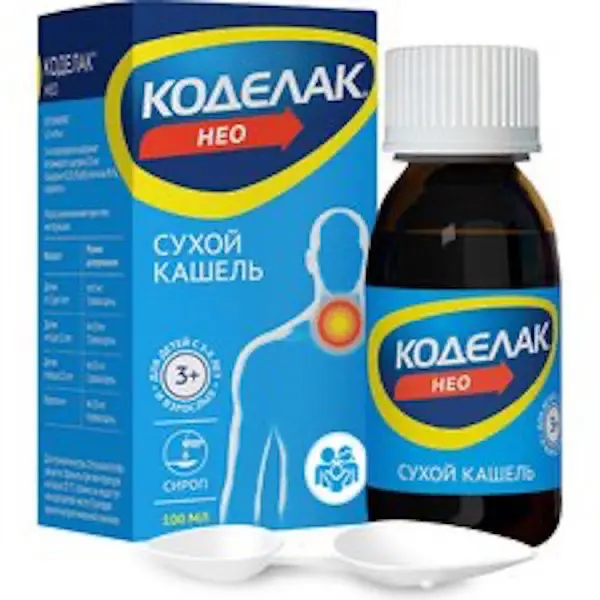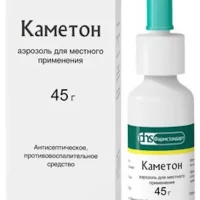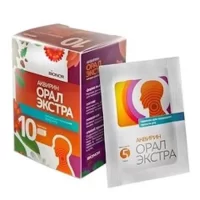Description
Mucocil Solution Pharmacodynamics
Acetylcysteine is a mucolytic, expectorant, used to thin sputum in diseases of the respiratory system. Acetylcysteine is a derivative of the natural amino acid cysteine (N-acetyl-L-cysteine). It has a pronounced mucolytic effect, belongs to the class of direct mucolytics.
The action of acetylcysteine is associated with the ability of free sulfhydryl group to break intra- and intermolecular disulfide bonds of glycoprotein aggregates of sputum, which leads to depolymerization of mucoproteins, providing a strong thinning effect and reducing the viscosity of mucus. Acetylcysteine exhibits mucolytic activity against any type of sputum – mucous, mucopurulent, purulent. Acetylcysteine increases secretion of less viscous sialomucin by bocalytic cells, reduces bacterial adhesion on the epithelial cells of the bronchial mucosa. Stimulates bronchial mucosa cells, the secretion of which lyses fibrin.
Acetylcysteine liquefies sputum, increases its volume, facilitates sputum separation and significantly softens the cough.
In addition to direct mucolytic action, acetylcysteine has powerful antioxidant pneumoprotective properties that provide effective protection of the respiratory organs from the toxic effects of negative factors: inflammatory metabolites, environmental factors, tobacco smoke.
Acetylcysteine has a direct antioxidant effect because it includes a free thiol group (-SH) that can directly interact and neutralize electrophilic oxidative toxins.
In addition, it reduces induced hyperplasia of mucoid cells, enhances the production of surfactant compounds by stimulating type II pneumocytes, stimulates mucociliary activity, which leads to improved mucociliary clearance.
Stimulates mucosa cells of the bronchi, the secretion of which lyses fibrin. Has a similar effect on the secret produced by inflammatory diseases of the ENT organs.
Acetylcysteine prevents alpha1-antitrypsin (enzyme inhibiting elastase) from losing its activity, which can occur as a result of exposure to HOCL – a powerful oxidant produced by myeloperoxidase enzyme of active phagocytes.
Acetylcysteine easily penetrates the cell and is deacetylated, releasing L-cysteine, an amino acid necessary for glutathione synthesis, which is the most important factor of intracellular protection against exogenous and endogenous oxidative toxins and various cytotoxic substances. This feature of acetylcysteine makes it possible to use the latter effectively in acute poisoning with paracetamol and other toxic substances (aldehydes, phenols, etc.).
Mucolytic properties of acetylcysteine begin to appear within 1-2 days from the beginning of therapy.
Indications
Mucolytic agent for acute and chronic respiratory diseases associated with excessive bronchial secretion: bronchitis, tracheitis, bronchiolitis, pneumonia, bronchiectatic disease, cystic fibrosis, lung abscess, pulmonary emphysema, laryngotracheitis, interstitial lung diseases, lung atelectasis (due to blockage of the bronchi mucous plug).
Catarrhal and purulent otitis, maxillary sinusitis (facilitation of secretion discharge).
Removal of viscous secretion from the airways in post-traumatic and postoperative states.
Contraindications .
Hypersensitivity to acetylcysteine and other components of the drug; Gastric and duodenal ulcer in acute stage, hemoptysis, pulmonary hemorrhage, hereditary lactose intolerance, lactase deficiency, glucose-galactose malabsorption, phenylketonuria, children under 2 years old (for dispersible tablets 100 mg, 200 mg), children under 14 years old (for dispersible tablets 600 mg), pregnancy and breast-feeding.
With caution:
Bronchial asthma, hepatic and/or renal insufficiency, adrenal diseases, esophageal varices, arterial hypertension, susceptibility to pulmonary bleeding, hemoptysis, gastric and duodenal ulcer in anamnesis, histamine intolerance (long-term use of the drug should be avoided, because. (long-term use of the drug should be avoided because acetylcysteine affects the metabolism of histamine and may lead to the occurrence of intolerance symptoms, such as headache, vasomotor rhinitis, itching).
Pregnancy and lactation:
The use of the drug during pregnancy and lactation is contraindicated.
Dosage and administration
- Dispersible tablets can be taken in different ways: the tablet can be swallowed whole with water or dissolved in water before intake. The tablets should be dissolved in at least 50 ml of water. The resulting suspension should be thoroughly mixed before intake.
- Mucolytic therapy
- Adults: 600 mg (in recalculation to the required number of dispersible tablets) once a day or 300 mg (in recalculation to the required number of dispersible tablets) two times a day or 200 mg (in recalculation to the required number of dispersible tablets) three times a day.
- The maximum daily dose of apetylcysteine is 600 mg/day.
- Children:
– Children 2 to 6 years of age: 100 mg (recalculated to the required number of dispersible tablets) 2 to 3 times per day (corresponding to 200 to 300 mg of apetylcysteine per day).
– children from 6 to 14 years: 100 mg (recalculated to the required number of dispersible tablets) 3-4 times a day or 200 mg (recalculated to the required number of dispersible tablets) 2 times a day (corresponding to 300-400 mg of acetylcysteine per day).
– Children over 14 years of age: 300 mg (recalculated to the required number of dispersible tablets) 2 times a day or 200 mg (recalculated to the required number of dispersible tablets) 2-3 times a day (corresponding to 400-600 mg of acetylcysteine per day).
- Cystic fibrosis
– Children from 2 to 6 years of age: 100 mg (recalculated into the required number of dispensable tablets) 3 to 4 times a day (corresponding to 300-400 mg of acetylcysteine per day);
– children from 6 to 14 years of age: 100 mg (recalculated to the required number of dispersible tablets) 4 times a day or 200 mg (recalculated to the required number of dispersible tablets) 2-3 times a day (corresponding to 400-600 mg of acetylcysteine per day);
– Children over 14 years of age and adults: 200 mg (recalculated to the required number of dispersible tablets) 3 times a day or 300 mg (recalculated to the required number of dispersible tablets) 2 times a day (corresponding to 600 mg of acetylcysteine per day).
- The duration of treatment should be assessed individually. In acute conditions, the duration of treatment is 5 to 10 days; in the treatment of chronic diseases – up to several months (as recommended by the doctor).
- If after treatment no improvement occurs or symptoms worsen or new symptoms appear, it is necessary to consult a doctor. Use the drug only according to the method of administration and in the doses specified in the instructions.





